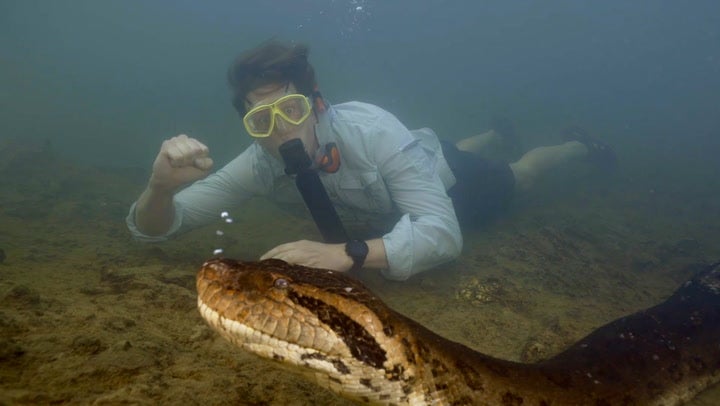World’s largest snake Ana Julia found dead in Amazon rainforest just weeks after it was discovered
The 26-foot anaconda was discovered during filming for National Geographic’s Disney+ series ‘Pole to Pole with Will Smith’
Your support helps us to tell the story
From reproductive rights to climate change to Big Tech, The Independent is on the ground when the story is developing. Whether it's investigating the financials of Elon Musk's pro-Trump PAC or producing our latest documentary, 'The A Word', which shines a light on the American women fighting for reproductive rights, we know how important it is to parse out the facts from the messaging.
At such a critical moment in US history, we need reporters on the ground. Your donation allows us to keep sending journalists to speak to both sides of the story.
The Independent is trusted by Americans across the entire political spectrum. And unlike many other quality news outlets, we choose not to lock Americans out of our reporting and analysis with paywalls. We believe quality journalism should be available to everyone, paid for by those who can afford it.
Your support makes all the difference.The world’s largest snake has been found dead in the Brazilian Amazon Rainforest just weeks after it was discovered.
A team of scientists discovered the previously undocumented species of giant anaconda in the Amazon, during filming for National Geographic’s Disney+ series Pole to Pole with Will Smith.
The huge reptile, named Ana Julia, was found in the Formoso River in the rural area of Bonito in southern Brazil’s Mato Grosso do Sul State five weeks ago.
The 26-foot northern green anaconda weighed around 440lbs - or 31 stone - and had a head the same size as a human’s.
There have been reports claiming the snake may have been shot but a Dutch researcher who helped discover the Ana Julia stressed the cause of death was still being investigated.
Professor Freek Vonk shared the news on Instagram, saying: “With enormous pain in my heart I want to let you know that the mighty big green anaconda I swam with was found dead in the river this weekend.”

“An iron-strong animal, a survivor, one that’s been swimming around Bonito for decades,” the professor added.
“As far as we know, she was super healthy and still in the prime of her life, and in the coming years she could have taken care of many descendants. Since there are not so many of this species of colossal giant snakes swimming around, the blow to biodiversity (and this particular species in particular) is also huge,” he added.
Professor Vonk previously said he heard reports the snake was shot dead, but has since clarified that authorities have not yet found any evidence pointing towards this.
“The cause of death is currently still being investigated, considering all possible options. So it’s also possible that she died a natural death,” he said.
At the time of discovery, Professor Bryan Fry from The University of Queensland said: “The size of these magnificent creatures was incredible – one female anaconda we encountered measured an astounding 6.3 metres long
“There are anecdotal reports from the Waorani people of other anacondas in the area measuring more than 7.5 metres long and weighing around 500 kilograms.”
The new species, described in the journal Diversity, diverged from the previously known southern green anaconda about 10 million years ago, differing genetically from it by 5.5 per cent.
Join our commenting forum
Join thought-provoking conversations, follow other Independent readers and see their replies
9Comments